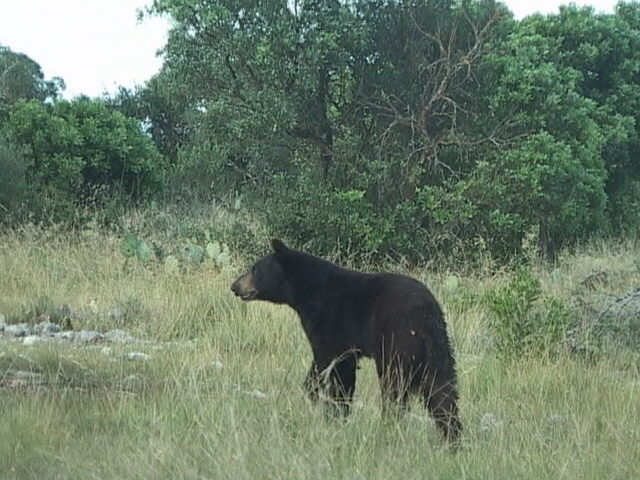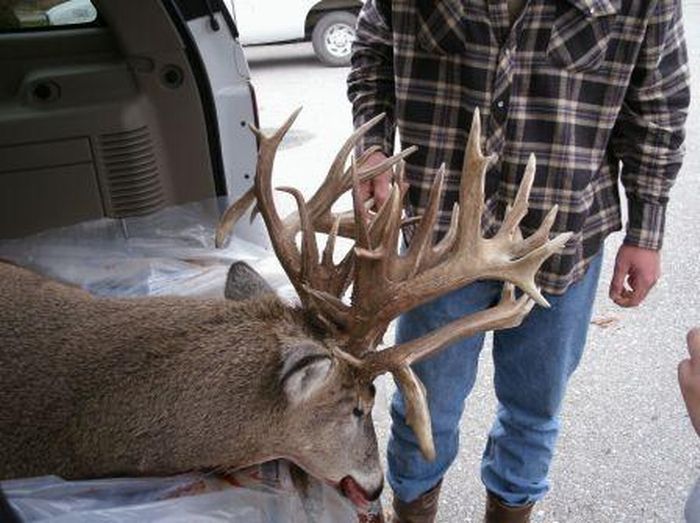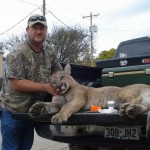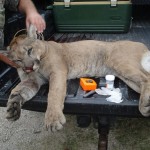According to experts, black bear were eradicated from Texas by the 1950s. However, bears would occassionally show up from time to time as they traveled into the Lone Star State—primarily from Mexico. Because there was no game law prohibiting them from being killed, the State of Texas formally made bear hunting illegal in 1983. Shortly thereafter, bears that moved north and into Texas were protected, begin to reproduce, and have been expanding their range north and eastward since.
Black bear have had a stronghold in the mountainous areas of the Trans-Pecos, but the animals have been moving into the Edwards Plateau more recently. They are showing up on game cameras placed out by hunters to track white-tailed deer. In fact, just last year one had to be chemically immobilized and moved out of the city of Del Rio, and another big bear was road-killed near Alpine. Then there was the shooting of a black bear in Menard County earlier this year:
“Ray Hernandez was checking for oil at a pump jack this summer on a vast stretch of ranchland in Menard County when his cell phone rang. It was a well worker at a pipe yard on the property, insisting that he’d seen a bear.
The June 23 sighting escalated swiftly into a bear hunt that ended with the crack of a rifle, a felled beast and a criminal charge against Hernandez, who decapitated the state-protected creature with a hacksaw and ferried home its head and paws.
The black bear that wandered onto the Central Texas cattle ranch that day is the first ever confirmed in that part of the state, according to Capt. Alan Teague, a game warden with Texas Parks and Wildlife. For Teague and others at the agency, it’s further proof that the stamped-out species is reclaiming lost territory.”



